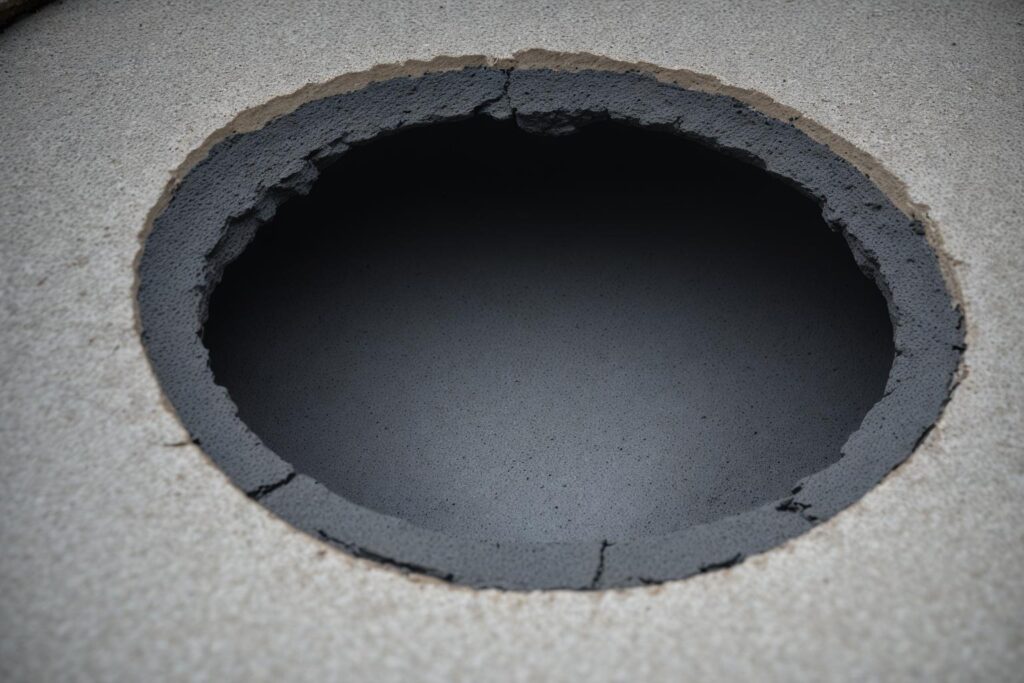The choice between perforations in the form of holes or slits determines the efficiency and functionality of the entire drainage system. It is a decision that requires careful consideration in the intricate world of drainage pipe design. Each type of perforation carries its own set of benefits as well as drawbacks when it comes to water management. This article explores the unique properties of these two choices to determine the most superior method of perforation. Understanding how each of them works can help you make an informed decision that is better suited for specific drainage needs.
Hole perforation
Perforating holes in drainage pipes helps to merge functionality with efficiency. They need to be placed strategically along the surface of the pipe to serve as gateways for water entry. This, in turn, helps to facilitate optimal drainage while preventing waterlogging. The process involves precision drilling or cutting, ensuring uniformity to promote a controlled flow of water while preventing soil intrusion.

Hole perforation can be useful and efficient
By employing advanced perforation techniques, engineers create a balance between maximizing drainage capacity and maintaining structural integrity. This innovative approach not only safeguards against water accumulation but also enhances the overall performance of drainage systems, mitigating the risk of erosion and flooding in diverse environmental conditions.
Slit perforation
Creating slits on the surface of drainage pipes is an ingenious solution designed to optimize the flow of water inside these systems. The technique involves creating small openings or slits that are strategically positioned along the length of the pipe to allow water to escape. Unlike hole or round perforation, slit perforation offers increased surface area while controlling the amount of water released. This helps to maintain soil structure while preventing soil erosion. The strategic positioning maximizes the effectiveness of drainage while reducing the risk of clogging. It is an innovative approach that enhances the overall performance of drainage systems by ensuring proper water management.
How to choose the right perforation method
Soil type
The ideal perforation method may vary depending on the type of soil considerations. A hole-based approach allows better water infiltration because of its increased surface area making it ideal for cohesive or clay soils. Slits, on the other hand, provide enhanced water movement and works well if you live in regions with sandy soils where drainage is crucial. A tailored perforation method that aligns with the specific soil characteristics allows for optimal outcomes in terms of agriculture or construction.
Drainage goals
Choosing the best perforation method lies in aligning your drainage objectives with the characteristics of holes or slits. Holes provide efficient water removal but can risk soil displacement. On the other hand, slits excel in promoting controlled water release while mitigating soil disturbance. The type of perforation you choose should be tailored to your specific goals. It is imperative to balance swift water removal with soil preservation for a harmonious and effective perforation solution.
Considerations for maintenance
Another factor to consider when deciding between holes and slit perforation is diligent maintenance assessment. Because of their simplicity, holes allow for simple cleaning and maintenance. Slits, on the other hand, may necessitate extra care. It is critical to consider maintenance work accessibility as well as the operational environment. The idea is to choose a method that is easy to inspect and maintain. It is a deliberate method that assures longevity and effective operation, protecting against any disturbances in the perforated material’s performance.
So, which method is better?
The debate between the two major perforation methods; holes and slits continue to be a subject of heated debate in engineering circles. While both techniques aim to enhance drainage efficiency, each bears distinct advantages. Holes facilitate uniform water distribution with their circular geometry and are often praised for their simplicity. Their even water dispersion minimizes the risk of clogging, ensuring sustained performance over time. Slits are characterized by their elongated openings and excel in preventing soil intrusion and root penetration inside the drainage systems.
Their ability to maintain a consistent flow even in the presence of finer particles makes them ideal for specific soil conditions. Ultimately, the superior method depends on the unique demands of the drainage context, with holes excelling in some scenarios and slits proving more superiority in others.
The choice between holes and slits appears as a critical option in the intricate realm of drainage pipe perforations. While all solutions have advantages, the best choice is dependent on the unique project requirements. Ultimately, the success of drainage is determined not by the type of perforation but by the careful integration of design and function.



